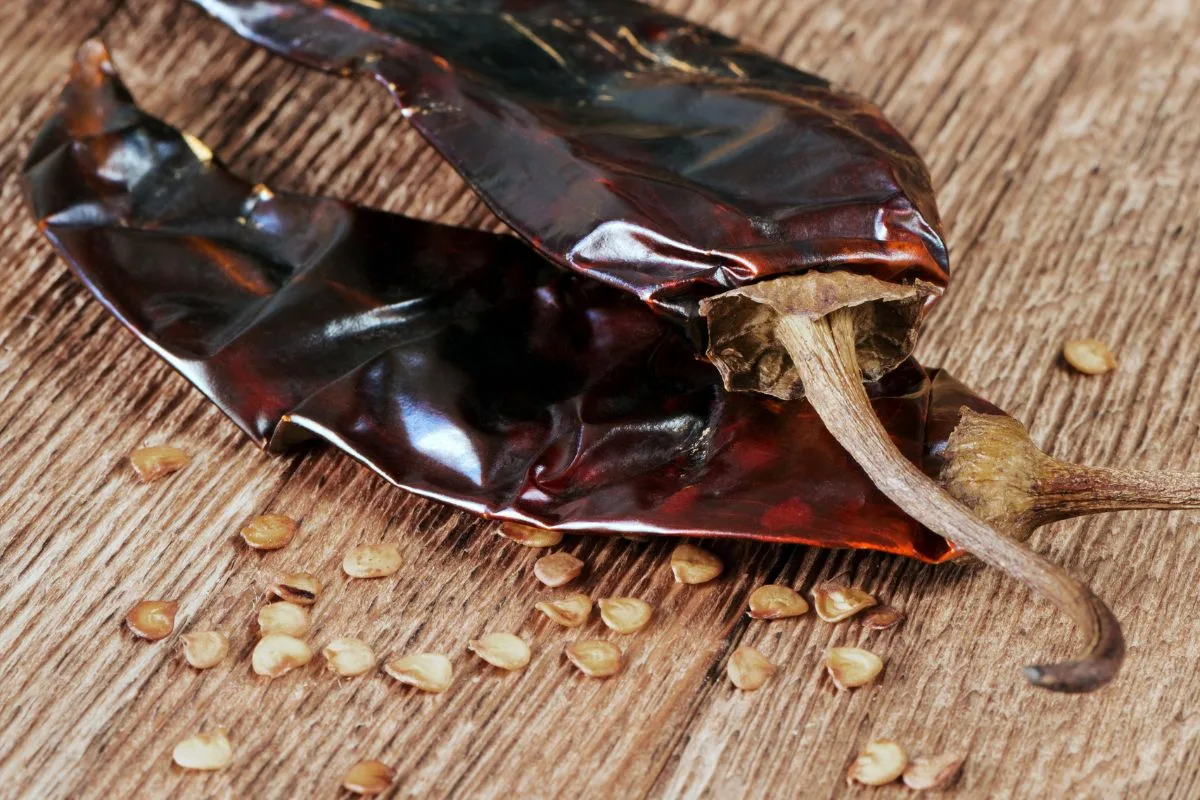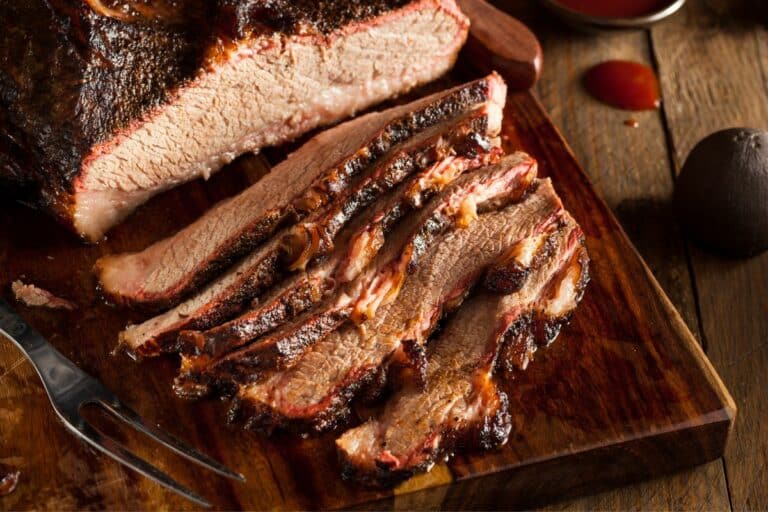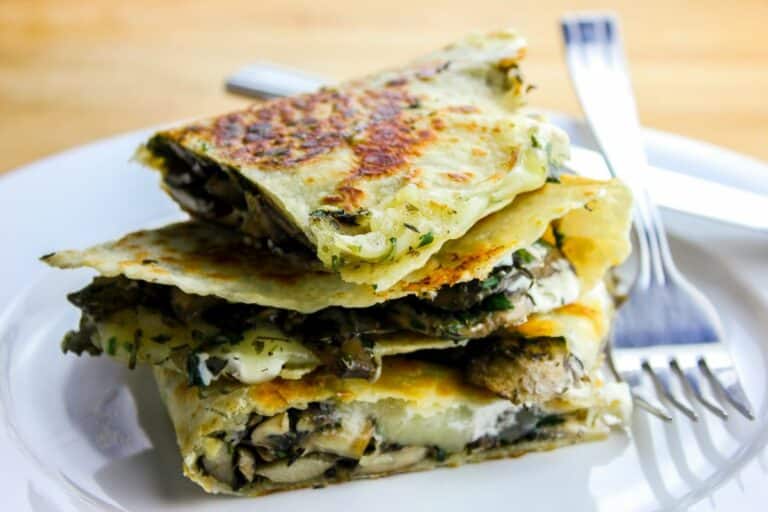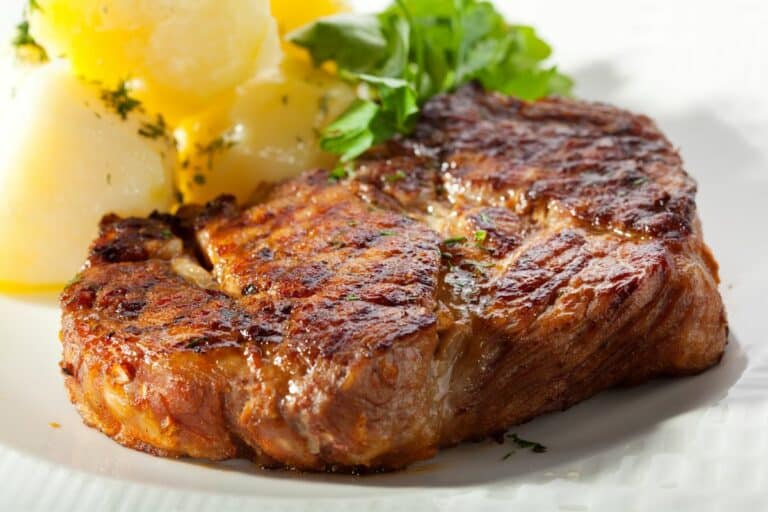California vs Guajillo Chilies: The Ultimate Guide to Flavor, Heat & Use
Home » Ingredient Guides » California vs Guajillo Chilies: The Ultimate Guide to Flavor, Heat & Use
California vs Guajillo Chilies: A Spicy Showdown
A comprehensive guide to mastering California and Guajillo chilies, from heat levels to family-friendly Mexican recipes.
By Oliver Mayerhoffer | Updated July 22, 2025
15+ years culinary experience • 50+ countries explored
The Story •
What Are They? •
Heat Comparison •
Flavor Profiles •
Preparation •
Culinary Uses •
Storage •
Substitutions •
Which Chili Suits You? •
Video •
FAQs
The Story Behind This Guide: Richard’s 2018 Mexican Adventure
In 2018, our friend Richard’s culinary journey through Oaxaca transformed how our family—Natalia, Victor, and I—cooks with dried chilies. His three-month immersion, filled with market visits and cooking lessons, inspired this guide. We were jealous of his vibrant photos and stories, but they became our lessons too.
At Oaxaca City’s bustling market, Richard was overwhelmed by chili varieties until Señora María, a wise vendor, taught him to distinguish California and Guajillo chilies. Her tips, combined with our travels across 50+ countries and my hospitality training, shape this guide to help you master Mexican flavors. Learn more about chili origins at the New Mexico State University Chile Pepper Institute.
What Are California and Guajillo Chilies?
California and Guajillo chilies are staples in Mexican cuisine, often confused but distinct in flavor and use. Understanding their roots, as detailed by the USDA FoodData Central, unlocks their potential for home cooks.
California Chilies
Also known as: Dried Anaheim peppers, Chile Seco del Norte
Origin: Developed by Dr. Fabián García in 1913 at New Mexico State University, commercialized in California.
Appearance: 6-7 inches, dark brick-red, matte finish
Character: Mild, perfect for family-friendly dishes
Guajillo Chilies
Also known as: Dried Mirasol peppers, Chile Tres Venas
Origin: Ancient Mexican variety, from the Nahuatl “huaxin.”
Appearance: 5-6 inches, deep burgundy, glossy skin
Character: Fruity, ideal for bold moles
Visual Identification: The Color Test
Guajillos glow with a burgundy hue, while California chilies are matte brick-red. Señora María’s tip: “Hold them to the light—Guajillos shine!”
The Heat Level Showdown
Scoville Scale Comparison
- California Chilies: 500-2,500 SHU (Mild)
- Guajillo Chilies: 2,500-5,000 SHU (Mild-Medium)
- For Reference: Jalapeño peppers range 2,500-8,000 SHU

Why the Heat Varies
Cornell University’s Vegetable Program notes that drought stress and soil conditions can spike capsaicin levels, as Richard found with surprisingly hot Guajillos in Oaxaca.
Flavor Profile Deep Dive
Capsaicin shapes unique flavors, as explored in the American Journal of Clinical Nutrition. Here’s how these chilies compare:
| Attribute | California Chile | Guajillo Chile |
|---|---|---|
| Primary Flavor | Mild, earthy sweetness | Fruity, tangy with berry notes |
| Secondary Notes | Subtle chocolate, light smoke | Tart cranberry, black tea, pine |
| Texture When Blended | Smooth, velvety | Rich, slightly granular |
| Best Paired With | Beef, pork, mild cheeses | Chocolate, duck, game meats |
| Ideal Cooking Method | Long, slow braises | Quick sauces, complex moles |
Master Class in Chili Preparation
Señora María’s “Three Sacred Steps” taught Richard how to unlock maximum flavor, a method we’ve perfected for home kitchens.
Step 1: The Clean
- Remove stems and shake out seeds (save for extra heat).
- Rinse under cool water to remove dust.
- Inspect for mold or damage.
Step 2: The Toast
- Heat dry skillet to medium temperature.
- Toast chilies 15-30 seconds per side until fragrant.
- Avoid blackening to prevent bitterness.
Step 3: The Soak
- Cover with hot chicken stock (not water!).
- California: 15 minutes; Guajillo: 20 minutes.
- Reserve soaking liquid for sauces.
Classic Culinary Applications
These chilies elevate Mexican dishes with distinct flavors, perfect for family meals or bold creations.
California Chili Specialties
- Chile Colorado: Mild backbone for this hearty stew.
- Enchilada Sauce: Victor’s favorite family-friendly red sauce.
- Chiles Rellenos: Use dried for sauce, fresh for stuffing.
- Pozole Base: Gentle heat complements hominy.
Guajillo Chili Masterpieces
- Mole Poblano: Key in the “holy trinity” of chilies.
- Tacos al Pastor: Signature red marinade.
- Pozole Rojo: Fruity depth for vibrant color.
- Adobo Sauce: Complex base for marinades.
Proper Storage for Maximum Shelf Life
Richard’s moldy Guajillos taught us storage matters, as confirmed by FDA guidelines.
The Golden Rules
- Airtight is Right: Use mason jars or vacuum-sealed bags.
- Cool and Dark: Store away from heat and sunlight.
- Freezer Option: Freeze for 1+ years.
- Quality Check: Discard brittle, faded, or moldy chilies.
Shelf Life Guidelines
Properly stored: 2-3 years with gradual flavor decline
Optimal use: Within 12-18 months for best flavor
Signs of spoilage: Brittle texture, faded color, musty smell, or mold
Smart Substitution Strategies
When California Chilies Are Missing
Use dried Anaheim or New Mexico chilies, or halve Guajillo amounts with tomato paste for sweetness.
Guajillo Alternatives
Ancho chilies need vinegar for tartness; chipotle adds smoke but lacks fruitiness. Guajillos are best for moles.
The Blend Strategy
Mix 2 parts California to 1 part Guajillo for a balanced sauce—Victor’s taco-night favorite.
Which Chili Suits Your Cooking Style?
Take our quick quiz to find out whether California or Guajillo chilies match your kitchen vibe!
How to Prepare California and Guajillo Chilies
Watch our family’s step-by-step guide to preparing these chilies for authentic Mexican dishes.
Essential Equipment for Chili Mastery
Cast Iron Skillet
Evenly toasts chilies with consistent heat.
Why essential: Prevents burning for perfect flavor.
High-Speed Blender
Creates silky-smooth sauces.
Why recommended: Ensures professional-quality moles.
Fine-Mesh Strainer
Removes seeds and skin for smooth sauces.
Why trusted: Elevates texture to restaurant standards.
Frequently Asked Questions
Answers to common questions about California and Guajillo chilies, based on our family’s experience and Richard’s Mexican adventure.
Continue Your Mexican Culinary Adventures
Salsa Fresca Guide
Master fresh Mexican salsas with your chili expertise.
Jalapeño Recipes
Explore more heat with family-tested jalapeño dishes.
Mexican Cuisine Guide
Dive into authentic Mexican cooking with our guide.
About the Author

Oliver Mayerhoffer blends European hospitality training with global culinary adventures across 50+ countries. His chili expertise stems from travels through Mexico and lessons from local vendors like Señora María, refined with Natalia and Victor’s family feedback.







